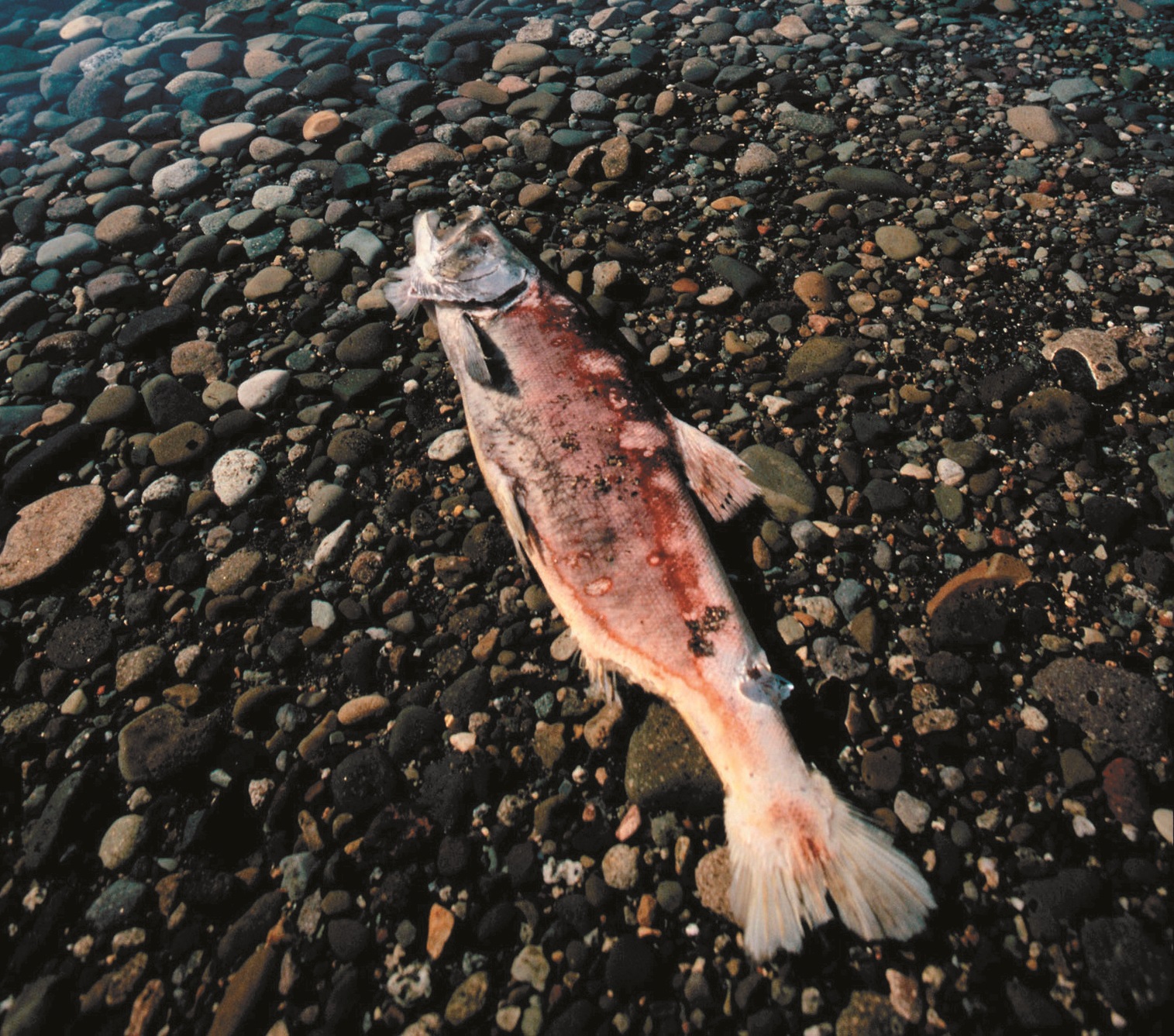As it was more than a century ago, it is still true today; water is the lifeblood of the American West. It turns barren landscapes into fertile oases of food and fiber, provides flowing paths for migrating fish, and supports complex ecosystems for plants and animals.
The West is changing, however, and its most precious resource is increasingly being used for other purposes—primarily being pulled from streams to support burgeoning urban needs. The dilemma is how to keep water in streams for fish, wildlife, recreation, and even aesthetics, yet still meet growing demands for out-of-stream uses that are helping to enrich local economies and agriculture. As an alternative to costly and inefficient regulations that dictate water allocations between agricultural and environmental uses, voluntary markets of tradable water rights are proving to be an effective and viable solution for governments, local communities, and private groups looking to preserve environmental flows.
Western water law
Water law in the West is based on the prior appropriation doctrine that was developed more than a century ago to address increasing demand for scarce water resources. The doctrine assigns property rights to water based on the principle of “first in time, first in right,” meaning the first to use the water for beneficial use gains the rights to it. Historically, in order to acquire a water right, water had to be diverted from a stream and used in a beneficial way—typically mining, irrigation, or stock watering. Over time, states broadened the definition of beneficial use to include the appropriation of water rights to meet increasing municipal and industrial demands. Unfortunately, after more than a century of appropriations, many streams in the West are now over-appropriated—the amount of water rightfully claimed by water right holders is more than the amount of water in the stream. Competing demands for insufficient water has left some streams severely dewatered, cutting of critical instream flows for fish and other wildlife.
In response to mounting pressure for instream flow protection, some states in the 1960s and 1970s responded with regulatory approaches, such as minimum stream-flow requirements, and imposed conditions on new appropriations. States began adopting legislation that recognized the importance of protecting water for fish and wildlife, and some states even issued new water rights for instream flows. These new water rights, however, were junior to existing rights, and on heavily appropriated streams, they had little or no impact on improving instream flows. As a solution, states began adopting legislation to permit the transfer of existing (more senior) rights through leases, purchases, and donations to be used for instream purposes. The results have been impressive.
Water, water everywhere…
Between 1998 and 2005, approximately $300 million was spent in more than a thousand voluntary water right transactions—throughout 10 western states—to restore stream flows for fish, wildlife, and other environmental purposes. Through leases, purchases, and donations, government agencies and private conservation groups acquired more than 6 million acre-feet of water to be left instream—enough water to cover an area the size of New Hampshire to a depth of one foot.
The federal and state governments are by far the largest participants in the market, responsible for nearly 90 percent of all expenditures. The Bureau of Reclamation and various state agencies have been actively acquiring water in California, Idaho, Washington, Oregon, and New Mexico to meet water requirements for endangered species and interstate compacts. In Colorado and Utah, only state agencies have acquired water for instream use.
Changes in legislation and growing interest from the private sector to restore stream flows have motivated the creation and fueled the success of an increasing number of water protection groups. Private groups often work closely with state and federal agencies, irrigation districts, and especially local farmers, ranchers, and other landowners to develop innovative solutions for the environment that are mutually beneficial. In addition to acquiring water, they fund water conservation projects, improve watersheds through restoration efforts, conduct educational programs and scientific research, and assist government agencies in connecting willing water right buyers and sellers.
Founded in 1993, Oregon Water Trust’s pioneering efforts to restore stream flows have been an inspiration to others seeking a market solution that balances instream needs for fish and wildlife with the continued use of water for agricultural production and urban communities. Water trusts have since been created in Montana, Washington, and Colorado, all sharing the common goal of restoring instream flows while supporting state policy changes that facilitate the use of water markets. Idaho Rivers United, a river conservation group dedicated to protecting rivers for fish, is currently working to create a water trust in Idaho.
In addition to water trusts, Trout Unlimited has played an important role in efforts to restore stream flows and conserve vital habitat for fisheries in Colorado, Idaho, Montana, and Utah. It also works cooperatively with state policy makers to draft legislation that facilitates water transactions for instream flows. In some states lacking active water markets or legislative means for restoring stream flows, the Nature Conservancy has been instrumental in improving instream flows through land acquisitions. The land is then fallowed and placed under a conservation easement, limiting future consumptive water use.
Big bang for the buck
Often lacking the funds available to state and federal agencies, private groups have spent comparatively less for instream flows throughout the past decade; however, private expenditures and the number of transactions continue to increase. Private groups spent less but made nearly double the number of transactions of federal and state agencies combined. Moreover, with increasing market activity and funding opportunities, private groups are expected to play a progressively important role in acquiring instream flows.
In Montana alone, there are more than 4,000 miles of streams that are either chronically or periodically dewatered each year. And in the 1990s, nearly every stream in Washington had Chinook, steelhead, or bull trout listed as threatened or endangered under the Endangered Species Act—primarily attributed to low stream flows. Each state in the West has its own story about inadequate stream flows and its impact on local fish, wildlife, and riparian ecosystems.
Federal and state agencies and private groups must decide how the money should be spent and where water should be restored. In practice, state and federal governments spend tens of millions of dollars annually restoring flows on large rivers such as the Columbia, Snake, smaller streams and tributaries. Both Montana and Washington Water Trusts concentrate their efforts on streams and tributaries where even a small amount of water can have a significant impact. Restoring flows can reconnect critical habitat for the spawning, rearing, and migration of native fish, while maintaining and improving wildlife habitat.
As water markets continue to evolve, however, some private groups are taking on much larger projects. The Lostine River in northeast Oregon, for example, provides critical spawning habitat for coho and spring Chinook salmon. In recent years, low stream flows in late summer and early fall have impeded fish migration and adversely impacted populations, contributing to record low fish counts. In 2005, a cooperative effort between Oregon Water Trust and 115 local ranchers and farmers led to adequate stream flows being maintained to give salmon unimpeded access to spawning grounds high in the Wallowa Mountains. More than 800 salmon have since returned to the Lostine to spawn. Landowners were compensated for entering into short-term agreements that ensured adequate water instream throughout the year.
In another landmark project involving the Taneum Canal Company, Columbia Basin Water Transactions Program, Yakima Nation, state and federal agencies, and the Washington Water Trust, winter stream flows have been restored to portions of Taneum Creek and the Yakima River in central Washington. The partnership is expected to benefit Chinook, steelhead, coho, bull trout, cutthroat, rainbow trout and wintering bald eagles, without affecting agricultural or livestock production.
No two states are alike
Although there are some similarities, no two states are alike in their approach to markets for environmental flows. In Montana, Oregon, and Washington, markets have flourished because of private and public efforts, laws that facilitate the free exchange of water rights, and demand for instream flows. In other states such as New Mexico, Arizona, Nevada, Utah and Wyoming, political, legal, and even social barriers have inhibited markets and thwarted efforts to restore flows for fish and wildlife. The Colorado Water Conservation Board is the only entity permitted to buy, lease, or hold water rights for instream flows and funding for acquisitions has been limited. Transactions for instream flows in Idaho have been limited to short-term leases by state and federal agencies in order to meet Endangered Species Act requirements. Similarly in California, although anyone can acquire water for instream uses, only state and federal agencies are driving the markets. Wyoming remains the only western state that prohibits state or private entities from buying or leasing water for instream uses. Recently introduced legislation, however, could amend some of the existing statutes and ease restrictions on leaving water instream for fish, wildlife, or recreation.
Water marketing for environmental flows has come a long way in the past decade and is gaining momentum. Increasingly states are adopting new legislation and amending the old to strengthen and better define property rights to water, while creating incentives for trade. The success and growing interest in water markets demonstrate that resources can be devoted to environmental goods without the often one-sided effects caused by regulation. As legislative reform occurs, access to markets should improve, allowing broader participation, particularly by private entities. The result will be enhanced stream flows for fish and wildlife habitat while benefiting local landowners and communities throughout the West.




